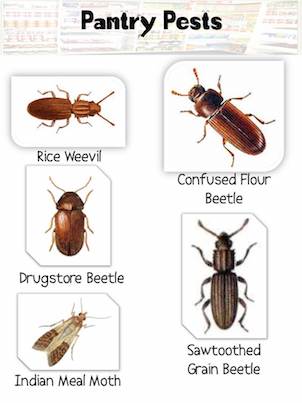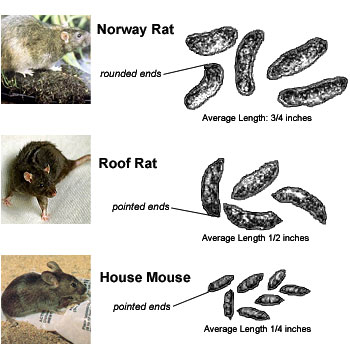In this blog, I will put in simple terms just how to get rid of pantry pests.
What Are Pantry Pests?
Pantry Pests are any insects that invade your stored food. Even your pets food are targets, and we have to include cockroaches into this group also. The most common pantry pests are moths, weevils and small beetles. Annoying and waste good food but not dangerous and easy to eliminate if you follow a few simple tips. Pantry Pests can be maggot-like caterpillars, moths or beetles.
Where Do Pantry Pests Come From?
Pests can make themselves at home in even the cleanest kitchens, often hitching a ride in your food at the grocery store, during delivery, or even way back at the processing plant or warehouse.
What Foods Attract Pantry Pests?
Most pantry pests like to feed on grains, like flours, cereals and processed foods, as well as dried fruits, beans, nuts and spices. Opened boxes are especially attractive to pantry pest because they allow easy entry, but many insects can get into unopened packages as well. I’ve even had them in my rodent bait which uses cornmeal to attract rodents.
What Should I Do If I Have Pantry Pests?
If you come across a beetle or two in an area where you don’t store food, it’s probably no cause for alarm — especially if the weather is warm. If you see them on the kitchen bench or the floor near your pantry, or by a window (or other natural light sources), it could be an early sign of infestation. It’s time to take a thorough look at your pantry shelves and packages.
Throw away the box, and then check the packages stored near it. If you can’t see to the bottom of a bag? Pour the food onto a baking sheet and look closely with a torch. If you don’t spot anything in other packages or around the pantry, the insects were likely a one-off incident. Other foods are OK to keep. If you want to be extra-cautious, freeze any potentially affected products for three to four days, or heat them in an oven at 60 degrees Celsius for an hour or two killing any eggs or insects.
How To Get Rid Of Pantry Pests
Empty your pantry and vacuum out the shelves, floors and corners. Then, wash the spaces down with soapy water — don’t apply bleach, ammonia or pesticides. They won’t prevent a future infestation and can be dangerous if they come in contact with foods. Before returning food products to the pantry, thoroughly check that each package is undamaged and uncontaminated.
What If I Ate A Beetle? Are They Poisonous?
If you’ve just enjoyed a nice meal, and then spot weevils in that bag of breadcrumbs or box of pasta, don’t worry. Pantry pests aren’t poisonous, and accidentally ingesting an insect or two won’t hurt you. Actually, in some countries, beetles and other insects are on the menu as food and very high in protein.
Keeping Pantry Pests Out Of Your Kitchen
First, the longer a product sits in your pantry, the more likely it is to become infested, so buy small packages you can use up in two to four months. Avoid containers that have dents, holes or scratches, and follow the “first in, first out” rule when using food up.
Transfer grains, cereals, nuts, dried fruit into a glass, metal or sturdy plastic containers with airtight lids. They keep insects out much better than cardboard, paper or foil. Store pantry basics in a cool, dry, dark place, and give your pantry a thorough cleaning every three to six months (which will help you stay organised and keep pests at bay).
Pest Control
There is one product that you can use on moths; it is not a pesticide, so it is safe to use in your pantry and is specific to the egg-laying moths that lay their eggs in the food. A sticky pad with a pheromone that catches the male moth, therefore ending the reproductive cycle.





